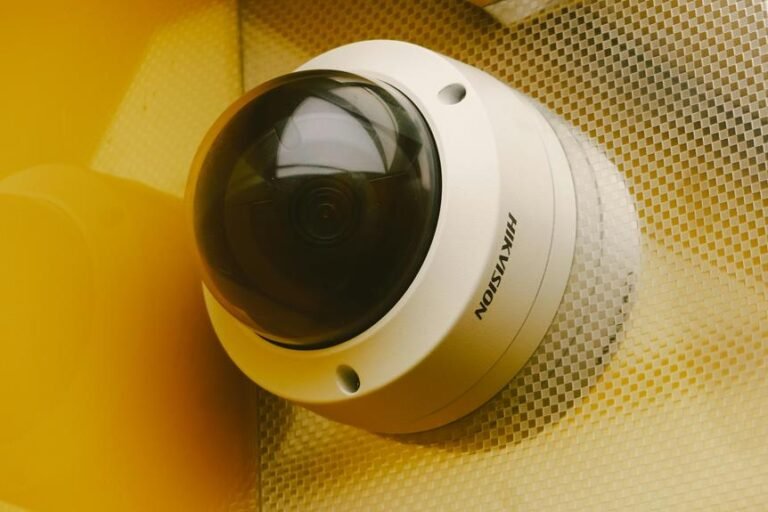Keypad Door Lock Not Working: Troubleshooting Guide
If your keypad door lock isn't working, first check the battery for low power. Make sure you're entering the correct code and inspect the keypad for damage. Keep electronic devices away and try resetting the lock. Regular maintenance like checking batteries and updating codes can prevent future issues. Sometimes, professional help may be needed if problems persist. Remember to handle the keypad with care, and always test the lock periodically. Understanding common causes and solutions can save you time and hassle in fixing keypad door lock malfunctions. Get your lock back on track with these troubleshooting tips.
A Quick Overview
- Ensure battery levels are sufficient and replace if low to maintain power supply.
- Double-check the entry code for accuracy to prevent input errors.
- Inspect the keypad for any physical damage that could affect its functionality.
- Keep electronic devices that may cause interference with the keypad signal at a distance.
- Reset the lock system to troubleshoot any potential programming errors.
Dead Batteries
If your keypad door lock isn't working, the first thing to check is whether the batteries are dead. Confirm the power source is functioning correctly before attempting battery replacement. Most keypad locks use batteries to operate, so power source issues can often cause malfunctions.
Positive: By replacing the batteries with fresh ones, you can easily troubleshoot and resolve common problems related to power supply in your keypad door lock. This simple solution can quickly restore functionality to your lock and ensure security for your property.
Negative: However, if the batteries aren't the issue, there may be a more complex underlying problem with the keypad lock system itself. In such cases, it may be necessary to seek professional assistance to diagnose and repair the malfunction. Ignoring the issue or attempting DIY repairs without proper knowledge could potentially worsen the situation and compromise the security of your property.
Incorrect Code Entry
When dealing with keypad door lock issues, it's crucial to consider the potential of incorrect code entry. Mistyping the code can result in lockouts, causing inconvenience and frustration.
To avoid this, always double-check the code you input to ensure it aligns with the correct sequence. Regularly updating your code is a beneficial practice as it can prevent accidental lockouts caused by using an outdated code.
This proactive approach enhances security and reduces the risk of being locked out due to code errors.
Programming Errors
To troubleshoot keypad door lock issues related to programming errors, it's important to ensure that the correct programming steps have been followed accurately. If you're facing difficulties, consider the following:
Positive Points:
- User error: Double-check the manual and make sure you're following the programming instructions correctly. It's essential to understand each step and input the correct codes.
- Keypad functionality: Test the keypad to ensure all buttons are working properly. Look for any signs of physical damage or wear that could be affecting the keypad's performance.
- Reset: Attempt to reset the lock to its factory settings. This can often resolve programming issues by clearing out any errors or glitches in the system.
Negative Points:
- User error: If the programming instructions aren't followed accurately, it can lead to further confusion and potential lockout situations. Incorrect programming may result in the lock not functioning as intended.
- Keypad malfunction: If there are physical damages or faulty buttons on the keypad, it may require professional servicing or replacement. This could incur additional costs and downtime for the lock.
- Reset complications: While resetting the lock can help in resolving programming errors, it may also erase any previously stored codes or configurations. This can be inconvenient if you have multiple users or specific settings programmed into the lock.
Physical Obstructions
Physical obstructions that may hinder the proper functioning of your keypad door lock include installation issues like misalignment or loose screws. These can impede the keypad's performance and cause issues with locking and unlocking. On the positive side, ensuring that the keypad is properly installed and free of any obstructions can help maintain its functionality.
User error, such as placing objects too close to the keypad or entering incorrect codes, could also be causing problems with the keypad door lock. However, on the bright side, double-checking the area around the keypad for any potential obstructions and ensuring that the correct codes are entered can help prevent these issues and keep the keypad door lock working smoothly.
Keypad Wear and Tear
To ensure the proper functionality of your keypad door lock, regularly inspect it for signs of wear and tear that can affect its performance. Remember, proper keypad maintenance is essential for the security of your home. Be aware of the following:
Positive Points:
- Clean the keypad regularly to prevent dust accumulation, ensuring smooth operation.
- Regular cleaning can also prevent the buildup of dirt and grime, which can affect the keypad's responsiveness.
- Checking for any loosening of the keys or buttons can help maintain the keypad's tactile feedback and usability.
- Promptly replacing worn-out or damaged keys can prevent them from getting stuck or causing errors in input.
Negative Points:
- Neglecting to clean the keypad may lead to dust and debris interfering with the buttons, affecting their functionality.
- Ignoring loose keys or buttons can result in them becoming unresponsive or malfunctioning over time.
- Delaying the replacement of worn-out or damaged keys can compromise the security of your home, as they may not register properly or could potentially break during use.
Software Glitches
When encountering software glitches in your keypad door lock, troubleshooting techniques can help identify and resolve the issues efficiently.
It's important to check for firmware updates to make sure your lock's software is up to date. Firmware updates can enhance security features, fix bugs, and improve functionality. However, if not done properly, firmware updates can sometimes lead to compatibility issues with existing systems or devices.
Additionally, compatibility issues with other devices can cause malfunctions. By staying informed about firmware updates and addressing compatibility problems, you can keep your keypad door lock working smoothly.
Weather Damage
When it comes to safeguarding your keypad door lock from weather damage, there are several key points to consider for optimal functionality.
- Positive Points:
- Water Damage Prevention:
- Seal any gaps or cracks around the lock to prevent water intrusion.
- Installing a cover or shelter can shield the lock from direct exposure to harsh weather conditions.
- Regularly inspecting the lock for signs of water ingress can help detect issues early on.
- Maintenance Tips:
- Regularly cleaning the keypad and lock can prevent buildup of dirt and debris that may affect performance.
- Following the manufacturer's recommendations for lubricating moving parts can ensure smooth operation and longevity of the lock.
- Negative Points:
- Neglecting Sealing and Covering:
- Failure to seal gaps or cracks and not installing a protective cover can leave the lock vulnerable to water damage.
- Lack of Regular Maintenance:
- Neglecting to clean the keypad and lock regularly may lead to malfunctions due to dirt accumulation.
- Ignoring the lubrication of moving parts as advised by the manufacturer can result in wear and tear, affecting the lock's operation over time.
Factory Reset
Resetting the keypad door lock to its factory settings can be a helpful troubleshooting step to address issues with its functionality. On the positive side, a factory reset can often resolve minor glitches and restore the lock to its original settings, potentially fixing any problems you may be experiencing. This process may help in getting your keypad door lock working smoothly again.
However, there are potential negative aspects to consider. Resetting the lock to its factory settings will erase any custom settings or codes that you have programmed into the keypad. This means you'll need to reprogram the lock with new codes and settings, which can be time-consuming and inconvenient. Additionally, if there are underlying hardware issues causing the keypad malfunction, a factory reset may not fully address the problem.
It is important to weigh the pros and cons before proceeding with a factory reset of your keypad door lock. If you decide to do so, remember to consult your user manual for specific instructions to ensure you follow the correct steps.
Frequently Asked Questions
How Do I Reset a Keypad Door Lock Without a Factory Reset?
To reset a keypad door lock without a factory reset, try changing the keypad lock battery first. Sometimes keypad lock troubleshooting guides suggest this simple step to resolve issues. It's a quick fix that might do the trick.
Can Extreme Temperatures Affect the Functionality of a Keypad Lock?
Extreme temperatures, especially drastic fluctuations, can indeed impact the functionality of a keypad lock. Weather conditions can cause malfunctions in the keypad lock system, leading to issues with opening or securing the door.
What Should I Do if My Keypad Door Lock Beeps Continuously?
If your keypad door lock beeps continuously, try replacing the batteries first. Faulty programming or a malfunction could also cause this issue. Address security concerns promptly by detecting and rectifying any errors in the lock's system.
Is It Possible to Change the Keypad Code Remotely?
Yes, it is possible to change the keypad code remotely. While remote access offers convenience, be cautious of security risks. Avoid sharing your keypad code to protect your privacy and prevent unauthorized entry.
Why Is My Keypad Door Lock Randomly Locking and Unlocking Itself?
If your keypad door lock is randomly locking and opening itself, it could be due to low keypad door lock battery or keypad door lock interference. Try replacing the battery first and ensuring no interference sources nearby.







